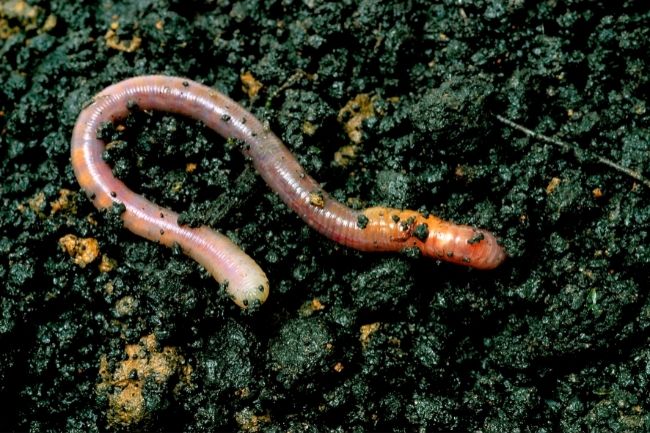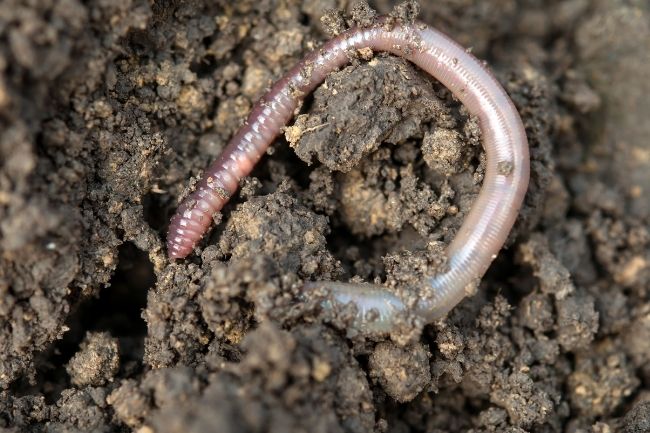Earthworms do have brains but they are much simpler than our own, being more like a collection of nerves. As well as brains they have a series of ganglia along their length that carry out certain commands.
Contents
What is a brain?
Brains come in many different sizes, shapes and forms, but their essential job is to send and receive data to help command the rest of the body how to perform. This data processing organ is the centre of the nervous system, and in most animals is an essential component of the body. However, not all animals have a brain, such as a jellyfish.
| Nervous System Component | Description |
|---|---|
| Ganglia | Clusters of nerve cells serving as control centers for specific body regions. Earthworms have multiple pairs of ganglia. |
| Ventral Nerve Cord | Long nerve cord running along the ventral side of the earthworm’s body. It connects the ganglia and coordinates movement. |
| Sensory Receptors | Specialized cells that detect external stimuli such as touch, light, and vibrations. Earthworms have various sensory receptors. |
| Peripheral Nerves | Nerves branching out from the ventral nerve cord to different parts of the body, transmitting signals between ganglia and sensory organs. |
| Connectives | Nerve fibers connecting the ganglia and coordinating the earthworm’s complex nervous system. |
While this may seem bizarre to us, these brainless animals seem to get on just fine, relying on a more basic nervous system to get them through the day-to-day tasks they need to complete. However, the vast majority of animals do possess brains, though many of them are very different from our own.
Also read: Here’s How Earthworms Move (Rippling Motion)
Do earthworms have a brain?

Earthworms do have a brain, though it is much smaller and simpler than our own. This is in a large part because it does not need to carry out such complex tasks as ours. Like our brains, the worm’s brain gathers data from the worm’s sensory organs.
Worms have three types of sensory organs, able to sense light, touch and certain chemicals. This information is vital to the worms’ survival. With light, the worm can know if it has reached the surface. At the surface, it is more vulnerable, particularly in the daylight. A tasty worm wiggling across the surface is just what a hungry bird is looking for.
Touch allows the worm to figure out where it is going, as it burrows through the soil. It can sense if it comes to an impenetrable object and needs to find another way around. It can also feel if a predator tries to grab it and escape as swiftly as it can.
The earthworm’s ability to sense chemicals could be said to be equivalent to our abilities to smell and taste. The chemical signals it picks up can help it work out where there may be food, or detect traces of a predator left behind in its wake.
All this information is sent to the brain via a central nerve cord, which runs the length of the body. This connects to the many sensory organs and delivers their messages to the brain. As well as connecting to the sensory organs the central nerve system connects to the motor neurons which control the worm’s movements.
The worm’s brain is referred to as a ‘ring brain’, as it is made up of a number of ganglia, connected together. Ganglia are a collection of nerve cells.
Other ganglia are located at intervals along the central nerve. This is so that some sensory data and muscle control can occur more locally, without needing to be processed by the brain. This can allow the worm to react quickly when particular senses are triggered.
| Sensory Organ | Location | Function |
|---|---|---|
| Epidermal Receptors | Throughout the body | Detect touch, pressure, and chemical changes in the environment. |
| Photoreceptors | In the anterior region | Detect light intensity and help earthworms orient themselves. |
| Ocelli | On the anterior segment | Simple light-sensing organs that detect changes in light intensity. |
The brain is located on the dorsal (back) side of the worm’s third segment. As well as being connected to the central nerve cord, the brain has a number of other connections linking it to essential organs and to the sensory organs on the segments before it.
Much of the light data comes from these foremost segments, and it is also where the mouth is situated. It is also the most important part of the body to protect as the worm cannot function without it.
Also read: Do Earthworms Have Eyes? Here’s How Light Receptors Work
Can a worm survive without its brain?

Many of us have experienced the guilt of cutting a worm in half by accident when gardening. The idea that worms can regrow when this occurs to them isn’t entirely untrue.
If the head of the worm and the saddle behind have survived intact then it is possible for this end to regrow a tail and survive the experience. However, without a brain, the tail will simply die.
This shows how important the brain is for worms, as without them they cannot survive. Interestingly when a worm’s brain is removed the worm will move continuously, suggesting the brain helps to regulate excessive movement.
Busy brain
We are often caught belittling the brains of other animals as too small or too simple, however, brains evolve to meet the needs of the species that carries them. For earthworms, the main things they need to know the majority of the time is where their food is and how to get away from danger.
For this level of processing a relatively small and simple brain is good enough. For humans, a lot of the reason we developed a big brain is because of our dexterity and our complex social structure. Without hands and a largely solitary life, worms don’t have half as much they need to think about.
Interestingly worms have been found to sleep, something we often associate with a need to rest our minds as well as our bodies. Sleep often occurs after a traumatic experience such as escaping from a predator.
Additionally, brains are expensive organs, they use a lot of energy to build and to run. So in order to be as efficient as possible animals will evolve not to carry more brainpower than they need. And for a worm, slowly digging its way through the soil, it really doesn’t need all that much.

